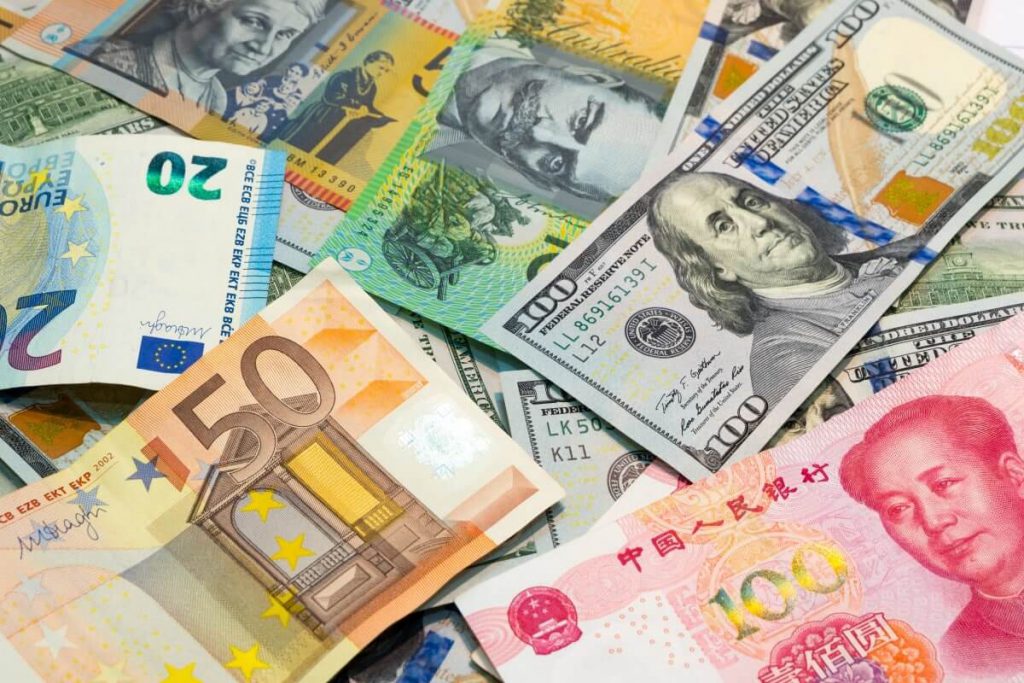
Euro and Sterling rallied while the U.S. dollar plummeted
The Euro surged forward against the dollar on Monday, surpassing a three-week high. The U.S. currency had been rallying during the last weeks, but today it tumbled down, ending in the red. On the other hand, the single currency jumped by 1.5% to $1.0198, hitting its highest level since August 17. It’s trading much higher than its 20-year low of $0.9862 reached last week. The Euro exchanged hands at $1.01345 at last, adding 0.88%. European Central Bank officials discussed aggressive monetary tightening, boosting the currency.
Some ECB policymakers spoke about the possible need to hike their key interest rate to 2% or more. That may become unavoidable to hinder record-high inflation in the euro area. Jane Foley, the head of FX strategy at Rabobank, noted that positions are very stretched currently, with traders hoarding dollars. Meanwhile, ECB comments have been increasing hawkish over the weekend, bolstering traders’ opinion that maybe the forex market is overdone.
In addition, there’s a chance that new data show a lowering in U.S. inflation on Tuesday. Such expectations supported stocks and caused investors to stray away from the risk-off greenback. But while the forex market remains fearful of taking a chance with high-risk currencies, USD will be firm. Such sentiment may last for another six months or more – Foley added.
Bundesbank President Joachim Nagel thinks that the ECB will need to take more measures if the picture for consumer prices doesn’t change in the near future.
On Monday, the Euro gained against the British Pound along with the dollar. The EUR/GPB pair jumped at 87.22 pence, hitting its highest level since February 2021. Even though the Sterling plummeted against the Euro, it rallied versus the greenback. Overall, the British Pound climbed up by 0.8% against the USD, hitting $1.1678 earlier in London trading.
How is the U.S. dollar faring?
The dollar index plunged by 0.67% to 108.25, dropping from a two-decade high of 110.79 hit on last Wednesday. Fed officials maintained their hawkish rhetoric through Friday. St. Louis Fed President James Bullard thinks the agency should raise its interest rates by 75 basis points, while Fed Governor Christopher Waller simply stated that they would need to support a significant hike at their next meeting.
Traders now await the U.S. CPI report that could influence the Fed’s decision. According to Commonwealth Bank of Australia analysts, this report could determine whether the agency raises rates by 50 basis points or 75 basis points next week.
On Monday, the Australian dollar soared by 0.34% higher, trading at $0.6870. As the riskier currency, the Aussie typically rallies when the greenback is weak. The Japanese Yen couldn’t gain against the USD, though. The dollar remained firm against it, exchanging hands at 142.66 yen. The USD/JPY pair hit a 24-year high of 144.99 last week.
The Japanese government is concerned about its currency’s continued weakness. Over the weekend, some officials said that authorities contemplated an intervention to stop the yen’s further drop. Moreover, a senior government spokesman stated that the government must take some measures to counter excessive Yen decreases. However, analysts don’t think that the Bank of Japan would support its currency by hiking interest rates.
What about the EM currencies?
Most EM currencies traded in the green for a third straight session today. In addition, an index of developing world equities skyrocketed to more than the one-week peak. The MSCI index of emerging market currencies also surged forward after tumbling to a two-year low last week.
The Hungarian forint and the South African rand gained more than 1% versus the dollar, along with the Polish zloty. Furthermore, the Indian rupee remained steady ahead of an inflation report. Investors expect the latter to show consumer prices jump to an annual 6.90% in August.
On Monday, the Czech crown rallied against the greenback, as well. However, it remained almost at the same point against the Euro. The new data showed that inflation unexpectedly lowered in August for the first time since June 2021.
Meanwhile, the Turkish lira ended in the red again. 2022’s worst-performing EM currency traded almost flat at 18.23 per USD. It remained near its all-time low of 18.40. Fresh data showed Turkey’s current account deficit in July widened to $4.01 billion. Analysts had forecast a deficit of only $3.6 billion, and this report weighed on the lira heavily.


